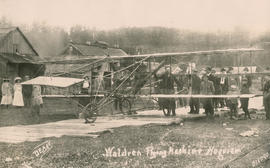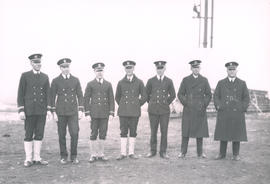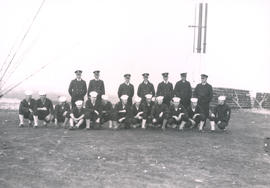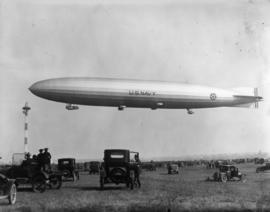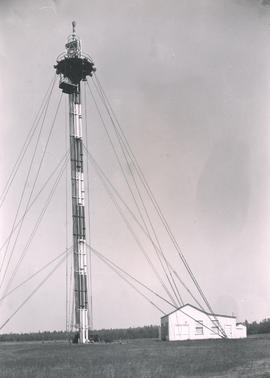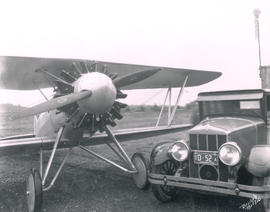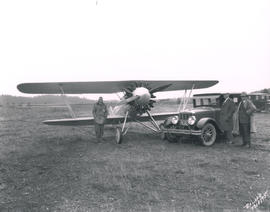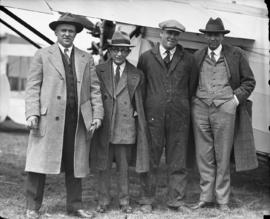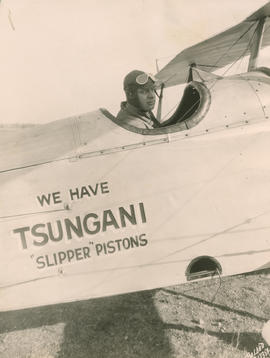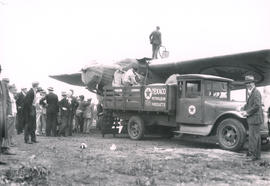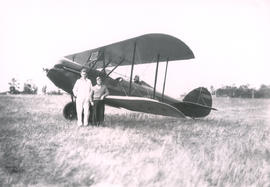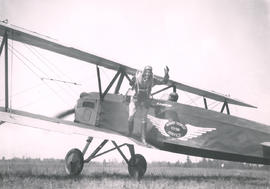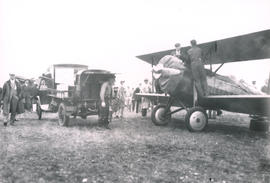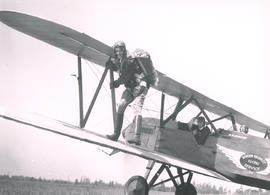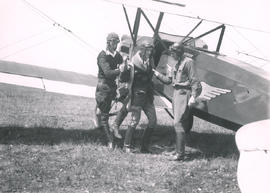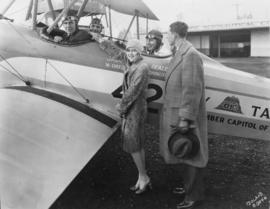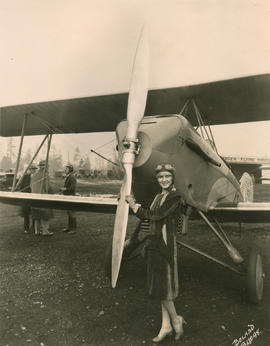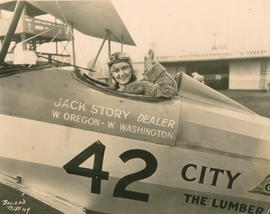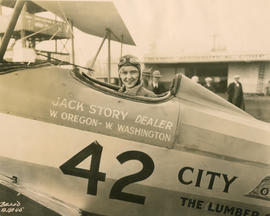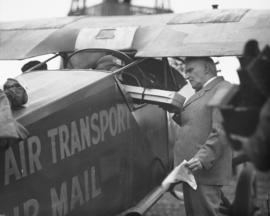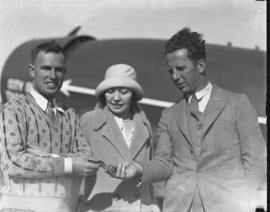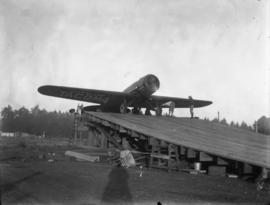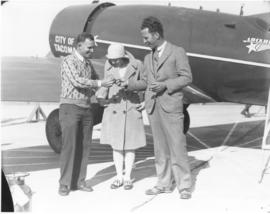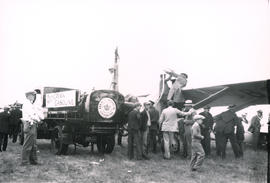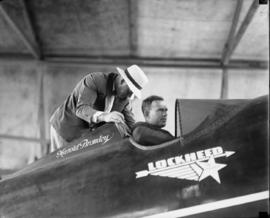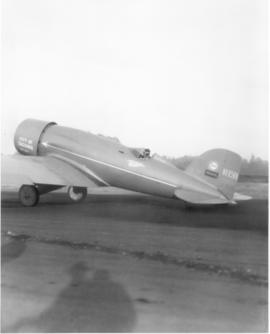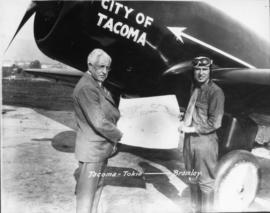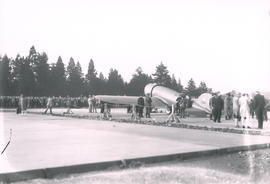ca. 1929. People crowd around to view Harold Bromley's airplane, the "City of Tacoma," at the Tacoma Field. This picture was probably taken on July 19, 1929 when Bromley arrived at Tacoma Field after a flight of 8 hours 17 minutes from Los Angeles in his new bright orange Lockheed Vega monoplane. To the right was the temporary hangar erected for the plane, a wooden framework covered by canvas. The city also erected a new 5400 foot runway for the flight. Bromley and his plane had captured the attention and newspaper headlines of Tacoma. The newspapers rang out "Tacoma to Tokyo!" Bromley was planning, with the backing of Tacoma businessmen, to make the first transPacific flight, a distance of 4,762 miles. It would be the longest flight segment ever flown. Thousands crowded the airfield to see the plane and history in the making. On July 28, 1929, Bromley's roared down the runway from the top of a ramp. It proceeded down the runway before veering off to the left and crashing nose first in the ground. A dazed Bromley descended from the cockpit, now 9 feet from the ground due to the plane's 45 degree angle, unhurt.The plane had crashed when gasoline from the overloaded tanks blinded Bromley. The crowds rushed the plane in a mob, held off by a ring of firemen and officers surrounding the gasoline soaked plane.
Bromley, Harold--Associated objects; Airplanes--Tacoma--1920-1930; Aeronautics--Tacoma--1920-1930;
